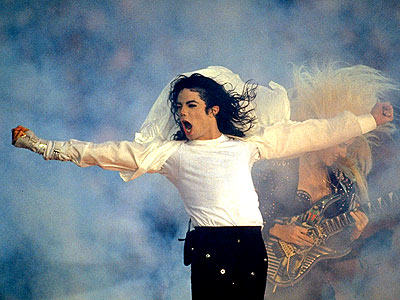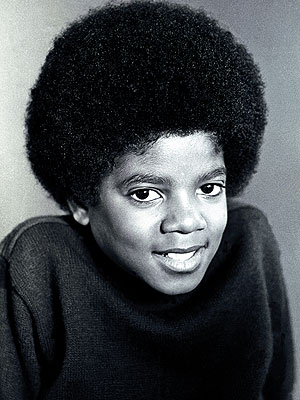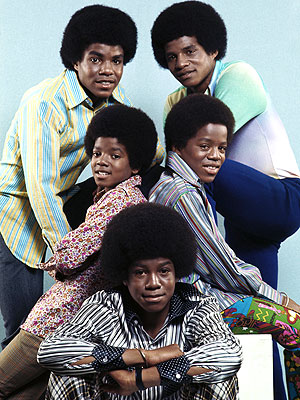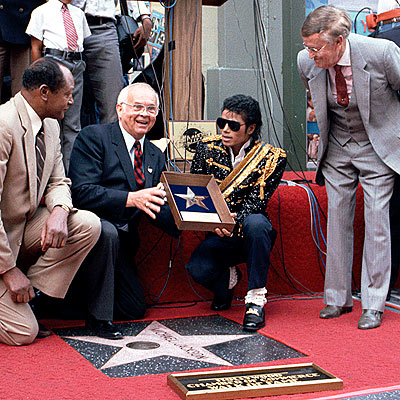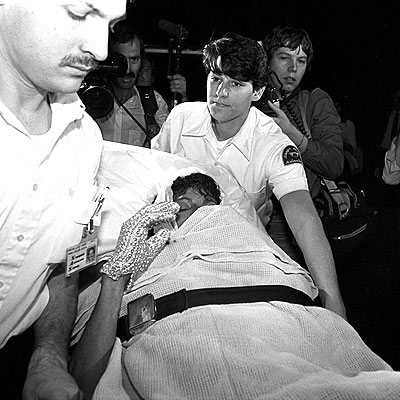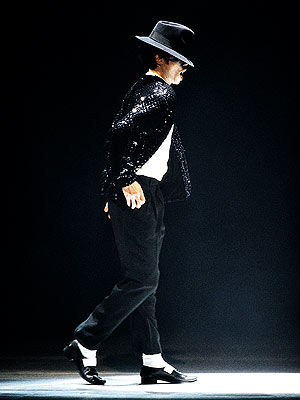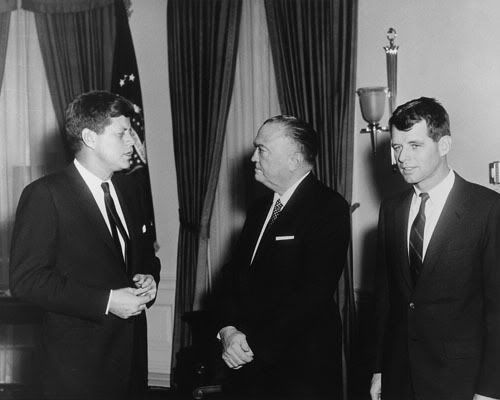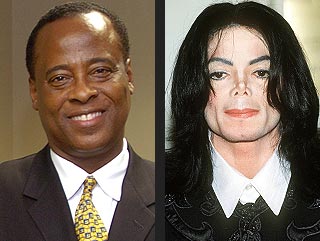 |
WELCOME TO THE WEBSITE OF DANIEL
GOLDEN, Colo. — China is stepping up and out in the world of space exploration. Space officials in that country are readying the Shenzhou 7 spacecraft for an October sendoff, one that will carry a trio of their "taikonauts" into Earth orbit. The mission not only promises to strengthen China's human space travel agenda, but also provides a glimpse into actions to be undertaken in the future. China has initiated a step-by-step approach in flying their taikonauts: The single-person Shenzhou 5 flight in 2003 of 14 orbits; the two-person voyage of Shenzhou 6 in 2005 lasting 5 days; and soon to head skyward, a threesome of space travelers. And on this flight, one of those space travelers is to carry out China's first spacewalk, also known as extravehicular activity, or EVA for short. In some ways, the upcoming mission spotlights the hop, skip, and jump abilities of China in comparison to U.S. space history. For the U.S., the Mercury series of single-seat flights led to the two-person missions of Gemini spacecraft, followed by sojourns of the Apollo three-person crew capsule. More to the point, in the U.S., the first human-carrying orbital flight of Mercury was in 1962; Gemini in 1965; and Apollo in 1968. So is there a true measure of growth, albeit somewhat skewed given the driving nature of the Soviet Union versus the U.S. "Moon race"? Case in point: If this next mission for China is successful in attaining orbit, that country will have taken something like a year less time to move from single-seat orbital flight to Apollo three-seat space travel - contrasted to U.S. human spaceflight progress in Earth orbit. Learning curve On one hand, China's steadfast evolution in human space treks is laudable. On the other, given that status card, leading spaceflight aficionados seem to sense different take-home messages. "Implications, as far as I can see...few, if any," said Joan Johnson-Freese, an analyst of China's space policy and Chair of the National Security Decision-Making Department at the U.S. Naval War College in Newport, R.I. Johnson-Freese told SPACE.com that the U.S. Mercury program of the 1960s was spearheading research just to see if humans could swallow in space...or how the human psyche would react once in Earth orbit. There were lots of medical questions, she noted. NASA's Project Mercury was quickly followed by a salvo of 10 human-carrying Gemini flights from March 1965 to November 1966. All-in-all, piloted Mercury and Gemini orbital outings tally up to 14 flights in five years, Johnson-Freese observed — and don't forget those two earlier and piloted suborbital Mercury missions. "Technology development was incremental because it was all new, but consistent," Johnson-Freese stressed. "The Chinese will have three flights with a successful mission next fall. They have been able to benefit from lots of lessons learned from both the Americans and the Russians. That is not to downplay the difficulty of the technology or the achievements of the Chinese...they just have the luxury of starting much higher on the learning curve," she concluded. Pow...pow...pow Given the years of mastering human space travel, is China's blossoming to-do list in order to operate in Earth orbit worth spotlighting? "Yes, absolutely...it is worth flagging," said Dean Cheng, an Asian affairs specialist at the U.S.-based Center for Naval Analysis in Alexandria, Virginia. "Now, the flip side to that, of course, is that it has also been done before. So it's not like they need to engineer everything from scratch," Cheng told SPACE.com, adding that China can depend on designs similar to those proven to work by the U.S. and former Russians. "But, yes, it is nonetheless impressive." Cheng points out, however: "The main difference ...there were more Mercury and Gemini flights in the intervening period. What is interesting about the Chinese effort is that they are doing it with so few flights. Four unmanned flights...then pow-pow- pow...one-man, two-man, three-man/EVA." Cheng also underscored the built-in danger to nations that ramp up human spaceflight expertise. Both the U.S. and the Soviet Union lost people during their respective run-ups. "You have to wonder if the Chinese can sustain a perfect space record," he added. "Obviously, one hope's that they can." Take-away knowledge In terms of where China is really headed in human spaceflight, crystal ball gazing is not easy. Stacking up their one-two-three punch in the field of human spaceflight against U.S. space program heritage doesn't quite match up, said Roger Launius, senior curator for the Division of Space History at the Smithsonian Institution's National Air and Space Museum in Washington, D.C. "Learning what China needs to know about conducting a lunar trip, probably a circumlunar trip, on three missions seems a bit thin to me," Launius told SPACE.com. While Mercury, Gemini, and Apollo programs might have been exceptionally cautious — and thus took more time and a greater number of missions than the Chinese effort — the knowledge return from the American programs versus China's three flights cannot be anywhere near each other, Launius explained. "Let's take the Gemini program," Launius said. "A central reason for it was to perfect techniques for rendezvous and docking, EVA, and long duration flight. Assuming that these same skills will be required in a Chinese moon program, and I believe they will, where will the knowledge and experience for them come from in these three missions?" Launius said that the Gemini flights swamp China in terms of demonstrated skills. The country has yet to rack up the experience base of spacewalking, rendezvous and docking that is now standard in the U.S. and Russia, he added. "A core question, it seems to me, is this: "Will ground simulation be able to compensate for the lack of orbital experience?" Launius said. "Perhaps, but I'm not sure." More acclaim than deserved? Stepping back and taking a larger look at where China's human space program is headed, Launius observed: "Personally, I think the Chinese program is moving forward at a modest pace and is getting a lot of mileage out of the fact that it is a secret effort that forces us to speculate about it. It is receiving among the space community more acclaim than I think it deserves." Launius said that there's enough in China's statements on future manned moon missions to fuel Western speculation that the country has a vast program, immensely capable, and seeking to at least equal the Americans in a Moon program of its own. "There is no official Chinese evidence to support the concept of a Chinese human moon program, despite the wishes of some inside the Chinese space program who would love to do it. Occasionally, someone will say something about this to Western media but official documents available do not say anything about such a program," Launius said. There are those in the U.S. space community that would like to see China hell-bent on sending taikonauts onto the moon's surface, Launius said, because they believe it would spark a new space race. "I'm not sure that would be the outcome of these Chinese efforts...but I also see no evidence for serious Chinese efforts in that direction," he added. Picking up speed Meanwhile, preparations to launch Shenzhou 7 are picking up speed in China. According to Chinese news services, the spacecraft has undergone modifications to accommodate an airlock. A spacewalking-qualified space suit has been okayed for flight. There have been extensive checkouts of the craft to fulfill its mission objectives. What day the three-person crew takes off from the Jiuquan Satellite Launch Center on its Long March booster in October is yet to be announced. Earlier, there has been comment about broadcasting the spacewalk live on television. Moreover, the spacewalk mission — and the duties to be performed during the EVA — has been deemed as crucial for China to make possible a space laboratory or station in Earth orbit. Earlier this month, it was noted that six taikonauts had been selected for the upcoming mission from 14 candidates — a crowd that included Yang Liwei, China's first space explorer who flew solo on Shenzhou 5. For Shenzhou 7, three will fly the actual mission with the others tagged as substitutes. Also, Yuanwang 6, an ocean-going tracking ship, has been delivered for service in Shanghai to participate in the Shenzhou 7 flight and to assist in the slated spacewalk. It joins sister ship, Yuanwang 5, to take part in maritime space surveying and mission controlling operations. Qi Faren, academician of the Chinese Academy of Engineering and researcher of China Spaceflight Technology Research Institute — credited as chief designer of China's first five Shenzhou spaceships and chief consultant for Shenzhou 6 and Shenzhou 7 - has been quoted as saying that plans are already underway for Shenzhou 8 and Shenzhou 9. He added that "the intervals between each launch will become shorter." Posted at: 05:21 PM | Permalink  | |  | |  del.icio.us del.icio.us
WATER FOUND ON MARS!June 23, 2008
Scientists said today they have "found proof" of water ice on Mars away from the polar ice caps, a discovery made by NASA's Phoenix Mars Lander. The finding is a crucial first step toward learning whether the ground on Mars is hospitable, because all life as we know it requires water. Now scientists can get on with the business of studying the chemistry of Mars dirt in more detail. When the probe took photos of a ditch it had dug four days before, scientists noticed that about eight small crumbs of a bright material had disappeared. They concluded those crumbs had been water ice buried under a thin layer of dirt that vaporized when Phoenix exposed them to the air. "It's with great pride and a lot of joy I announce today we have found proof that this hard material really is water ice and not some other substance," Phoenix principal investigator Peter Smith of the University of Arizona, Tucson said at a briefing Friday. The finding had been discussed tentatively yesterday, but in a press conference today, researchers left no doubts. Phoenix's robotic arm first revealed the crumbs about 5 cm deep in the trench called "Dodo-Goldilocks" on June 15. By June 19, they had vanished. If the crumbs had been salt, they wouldn't have disappeared, scientists said, and if the ice had been made of carbon dioxide, they wouldn't have vaporized. "What this tells us is we found what we're looking for," said Mark Lemmon, a Phoenix co-investigator from Texas A&M University. "This tells us that we've got water ice within reach of the [robotic] arms, which means that we can continue the investigation." The $420 million mission landed on the arctic plains of Mars May 25, embarking on a quest of at least four months to search for signs that the environment was once habitable to life. A "significant result" Finding ice on Mars isn't completely shocking, since observations from past satellites sent to orbit the planet, such as the 2001 Mars Odyssey spacecraft, have indicated that ice is likely to lie beneath the planet's surface. Still, if confirmed, this would be the first direct finding of that ice by a probe on the ground. "We certainly expected to find ice there," said Bruce Jakosky, a geologist at the University of Colorado who has been involved with past missions to the red planet. "It was the [previous] evidence for ice that sent us to that location. But there's a difference between expecting it and finding." Jakosky called the discovery a "significant result" that allows the Phoenix mission to go forward with its wet chemistry experiments, analyzing the soil for the history and composition of the ice. "If they had found no ice, which was a real possibility, that would make this much harder," he told SPACE.com. "I'm anxious to see the results of the chemical analysis." And although the 2001 Mars Odyssey satellite could measure the average water ice content in roughly the top meter of ground over areas of several hundred kilometers, these data didn't reveal how that ice was spread out, said Maria Zuber, a geophysicist at MIT who worked on past Mars missions, including the Spirit rover. "We don't know the form of the water, beyond the fact that there is too much there to be explained solely by water bound in minerals," Zuber said. "So chunks, a layer, etc. are all possibilities. The [Phoenix] observation is an important advance in our understanding of water on Mars, and continued sampling will undoubtedly add to the story." Next steps The next questions to answer are what chemicals, minerals and organic compounds might be mixed in with the water. "Just the fact that there's ice there doesn't tell you if it's habitable," Smith said. "With ice and no food it's not a habitable zone. We don't eat rocks — we have to have carbon chain materials that we ingest into our bodies to create new cells and give us energy. That's what we eat and that's what has to be there if you're going to have a habitable zone on Mars." To find this out, mission scientists plan to eventually put samples of ice into Phoenix's oven instrument, the Thermal and Evolved-Gas Analyzer (TEGA), which is designed to bake Martian dirt and analyze the vapors it emits to detect its composition. They also plan to use the onboard Microscopy, Electrochemistry and Conductivity Analyzer (MECA) instrument, a wet chemistry lab that measures levels of acidity, minerals, and conductivity in dirt samples. "Now we know for sure that we are on an icy surface and we can really meet the science goals of our mission at the highest level," Lemmon said. "I am just sitting at the edge of my chair waiting to find out what the TEGA and MECA can tell us about these soils." Expect the unexpected Although the ice finding was expected, until Phoenix actually found it, many scientists were still holding their breath. "As for the ice, we were expecting to find it, but science is full of the unexpected, so until they actually found the ice and can begin to study it there are real questions about whether or not the hypothesis was correct," said Phil Christensen, a geophysicist at Arizona State University who worked on 2001 Mars Odyssey, Mars Global Surveyor, and the Mars Exploration Rover missions. "The real excitement will come when they start to study the ice in detail and attempt to learn how it formed and how old it is." Additional reporting for this article was contributed by Jeremy Hsu, SPACE.com staff writer. Posted at: 05:34 PM | Permalink  | |  | |  del.icio.us del.icio.us
June 21, 2008TO FIND MORE PICTURES OF OUR GALAXY....... LOG ON TO NASA.gov AND LOOK THROUGH THE IMAGE OF THE DAY GALLERY
Posted at: 01:48 AM | Permalink  | |  | |  del.icio.us del.icio.us
INDIA TO JOIN NEW SPACE RACE TO MOONJune 18, 2008
BANGALORE, India — The Indian Space Research Organisation (ISRO) again has delayed the launch the nation's first lunar orbiter, this time to late September, due in part to late arriving payloads, according to ISRO spokesman S. Satish. It was the second postponement this year for the Chandrayaan-1 mission, which originally was scheduled to lift off April 9. That date was pushed to early July in anticipation of extra time needed for integrating the experimental payloads with the spacecraft. Satish said the decision to postpone until this fall was taken May 27 at one of the regular technical meetings reviewing the progress of the project. He cited delays in some of the orbiter's international payloads but declined to identify which ones. In addition, he said, there were "unforeseen" problems in interfacing the payloads with the spacecraft, but added that all the problems now have been overcome and "everything is under control." He said that as of now "all payloads have been integrated and testing is going on" at the ISRO Satellite Centre in Bangalore. Satish said the end-of-September launch date also would give ISRO sufficient time to gain complete confidence in the performance of the deep space network antenna built specifically for tracking Chandrayaan-1. The 32-meter parabolic dish antenna at Byalalu, 40 kilometers from Bangalore, currently is being tested by tracking Japan's lunar probe Kaguya, which was launched last September. Satish said the tracking of Kaguya is being done following formal permission from the Japanese Aerospace Exploration Agency. The 525-kilogram Chandrayaan-1 will be launched by a modified version of ISRO's Polar Satellite Launch Vehicle from the Sriharikota launch pad on India's east coast. Five of the probe's 11 experimental payloads were built by Indian scientists. The international payloads include: an X-ray Spectrometer, Atom Reflecting Analyzer, and an infrared camera, all supplied in cooperation with the European Space Agency; a Miniature Synthetic Aperture Radar and Moon Mineralogical Mapper, both from the United States; and a Radiation Dose Monitor from Bulgaria. Posted at: 02:33 PM | Permalink  | |  | |  del.icio.us del.icio.us
WATCH USA SPACE SHUTTLE LAND AT KENNEDY SPACE CENTERJune 14, 2008
Posted at: 05:24 PM | Permalink  | |  | |  del.icio.us del.icio.us
USA SHUTTLE DISCOVERY POISED TO RETURN TO EARTH TODAYJune 14, 2008
This story was updated at 12:33 p.m. EDT. CAPE CANAVERAL, Fla. - Astronauts aboard NASA's shuttle Discovery are gearing up for their planned Saturday landing after Mission Control found that a lost metal clip poses no threat to their spacecraft's return. Shuttle commander Mark Kelly and pilot Kenneth Ham test fired Discovery's maneuvering thrusters and power up systems to flex the shuttle's flight control surfaces. But after those tests, they reported spotting a shiny, rectangular bit of debris drifting away shuttle to the aft of its starboard wing. Mission controllers swiftly studied the 1- to- 1 1/2-foot long (0.3-0.4 meter) object in short video of and still images captured by the shuttle crew. It was one of three tail-mounted metal clips that are not needed for landing and posed no threat to the orbiter's planned landing. "We've seen these things come off before and it's really not a concern at all for entry," Kelly said in a televised interview today. "It's no worry at all." Discovery's crew is stowing last bits of cargo to prepare for tomorrow's planned 11:15 a.m. EDT (1515 GMT) landing here at NASA's Kennedy Space Center. Kelly and Ham are also rehearsing landing activities via a computer simulation. "Overall, it's a get ready for entry day," NASA's deputy shuttle program manager LeRoy Cain said Thursday, adding that the orbiter's heat shield appeared to be in good health for landing. Saturday homecoming ahead Discovery's six-man, one-woman crew is returning to Earth after a two-week mission to deliver Japan's massive, billion-dollar Kibo laboratory to the International Space Station (ISS). "That was pretty much solid work," Ham said Thursday. "We're all pretty much tired at this point and getting ready to come home." Japan's 37-foot (11-meter) laboratory is the size of a tour bus and the second segment of the Kibo research facility to reach orbit. It followed its small storage room, which astronauts delivered during an earlier mission in March. The new room, the largest ever launched to the space station, includes two windows, a robotic arm and a small airlock for passing new experiments to a planned porch-like platform due to launch to the space station next year. A smaller robotic arm for fine movements is also slated to fly. "It was just amazing," said Discovery mission specialist Akihiko Hoshide, who helped install Kibo, of the view of his country's new space lab during undocking Wednesday. "I can't really explain it." Returning to Earth with Kelly, Ham and Hoshide are mission specialists Karen Nyberg, Ronald Garan, Michael Fossum and returning station crewmember Garrett Reisman, who said he was awed at the sheer size of the now nearly three-quarters complete space station when Discovery undocked. "It started out as just a single, little module, and now it's enormous," said Reisman, who is wrapping up a three-month spaceflight aboard the station and has compared its interior to the inside of a jumbo jet. "With the addition of Kibo, it looks like a real space station, and that's exciting." Reisman, a NASA astronaut, joined the station's crew in March and was replaced by fellow U.S. spaceflyer Gregory Chamitoff, who arrived aboard Discovery last week to begin his own six-month mission. Discovery astronauts will set up a special recumbent seat for Reisman today on the shuttle's middeck that will allow the returning long-duration spaceflyer to return to Earth's gravity in a reclining position, rather than the upright seats of the shuttle's short-term flyers. "The truth is, adjusting back to gravity is not so easy," Reisman said during the mission. "Just like adjusting to weightlessness takes some time, adjusting back to gravity takes some time too." Discovery has two chances to land Saturday with NASA's Spaceflight Meteorology Group at the Johnson Space Center in Houston forecasting relatively fair conditions on landing day. Some clouds are expected during the shuttle's first landing window, with a slight chance of rain showers within 30 miles (48 km) during a second opportunity at 12:50 p.m. EDT (1650 GMT). Mission Control roused Discovery's crew early Friday with the song "Baby Won't You Please Come Home" by Louis Prima and Keely Smith, a tune chosen for Reisman by his wife Simone. "Good morning to you Houston and a special good morning to Simone, my favorite Earthling," Reisman said. "Get ready doll face, Discovery's coming home." NASA is broadcasting the Discovery's STS-124 mission live on NASA TV. Click here for SPACE.com's shuttle mission updates and NASA TV feed. Posted at: 03:05 PM | Permalink  | |  | |  del.icio.us del.icio.us
WELCOME BACK TO SPACE WITHOUT TIMEJune 12, 2008GREETINGS FELLOW EARTHLINGS AND SUPERSTARS OF THE GALAXY  WHILE I TRY TO UPDATE AND CONSTRUCT MY MYSTERY PAGE OF TOPICAL AND CELEBRITY NEWS..... I INVITE YOU TO ENTER THE TWILIGHT ZONE AND OUR SPACE LOG TO REACH LUNA WORLD BELOW: OUR EARTH MOON IN COLOR
1971: Apollo 15 finds rock from birth of Moon On the second day of the Apollo 15 mission, astronauts have uncovered a rock which may date back to the origin of the Moon.The so-called Genesis rock was found by lunar module pilots David Scott and James Irwin when they dug into the slope of Spur crater, on the flank of the Apennine Mountains.They were there on the second "moon safari", traveling for the first time in a custom-built lunar rover vehicle.The rover, which looks like a four-wheeled Jeep, has enabled the astronauts to spend more time away from the lunar module than ever before, and to go several miles away from the lunar lander, Falcon.'Sporty driving'There was a small setback when the front-wheel steering failed soon after setting off for the first time yesterday."It's just sporty driving," commented Scott. "I've got to keep my eye on the road every second."The fault was fixed in time for a longer drive today.The astronauts have so far spent 18 hours on the surface of the moon in three major moonwalks.They have collected 169 lbs (76.8kg) of moon rock from 12 different sites including Hadley Rille, an ancient channel believed to have been carved by torrents of flowing lava.But the highlight has been today's discovery of the ancient crystallized rock, believed to be about 4,500 million years old - dating back to the time the Moon itself was formed.Live on TVAll the astronauts' movements were followed in a live colour television transmission with unprecedented images of the Moon's highlands.They included the 15,000 ft (4,500 metres) high Mount Hadley, towering over the landing site of the lunar capsule at the foot of the Apennine mountain range.For the first time, the cameras were controlled from Earth, freeing up the astronauts to describe and explore what they were seeing.At the end of today's seven-hour expedition, flight director Gerald Griffin said, "I think without doubt we've just witnessed the greatest day of scientific exploration that we've ever seen in the space programme - possibly of all time."The experiments carried out by Apollo 15 were the most complex yet, and were originally planned for the cancelled Apollo 20 space mission.The last three Apollo missions have now been cut, and there are just two more flights scheduled to the Moon, the last due to take off next year.
Posted at: 08:53 PM | Permalink  | |  | |  del.icio.us del.icio.us
A BROTHERHOOD OF PLANETSJune 12, 2008
Pluto's years-long identity crisis just got more complex today. The International Astronomical Union has decided on the term "plutoid" as a name for Pluto and other objects that just two years ago were redefined as "dwarf planets." The surprise decision is unlikely to stem ongoing controversy and confusion, astronomers say. Sidestepping concerns of many astronomers worldwide, the IAU's decision, at a meeting of its Executive Committee in Oslo, comes almost two years after it stripped Pluto of its planethood and introduced the term "dwarf planets" for Pluto and other small round objects that often travel highly elliptical paths around the sun in the far reaches of the solar system. "Most of the people in astronomy and planetary science community had no idea this was going to come out," said Hal Weaver of the Johns Hopkins University Applied Physics Laboratory. Weaver called the process that produced the new definition "sort of outdated, outmoded, archaic." "In this day and age of transparency and mass communication, it seems a bit strange that such an important pronouncement would come out with so few people knowing about it, and, apparently, with no serious attempt to vet this with more people in the community," Weaver said. A meeting in August at the Applied Physics Laboratory is slated to debate the entire topic of defining planets. Meanwhile, other astronomers said the new definition needed more definition or that it might simply not be used. "This seems like an unattractive term and an unnecessary one to me," said David Morrison, an astronomer at NASA's Ames Research Center who, in 2006, said the IAU's actions on Pluto have created major rifts among astronomers. The new definition The name plutoid was proposed by the members of the IAU Committee on Small Body Nomenclature (CSBN), accepted by the Board of Division III and by the IAU Working Group for Planetary System Nomenclature (WGPSN), and approved by the IAU Executive Committee at its recent meeting in Oslo, according to a statement released today. Here's the official new definition: "Plutoids are celestial bodies in orbit around the sun at a distance greater than that of Neptune that have sufficient mass for their self-gravity to overcome rigid body forces so that they assume a hydrostatic equilibrium (near-spherical) shape, and that have not cleared the neighborhood around their orbit." In short: small round things beyond Neptune that orbit the sun and have lots of rocky neighbors. The two known and named plutoids are Pluto and Eris, the IAU stated. The organization expects more plutoids will be found. "Rather than resistance to 'plutoid,' I think we'll just be hearing groans," said Stephen J. Kortenkamp, senior scientist at the Planetary Science Institute in Tucson. Controversy continues One IAU leader recognizes it is adding to an ongoing controversy. The IAU has been responsible for naming planetary bodies and their satellites since the early 1900s. Its decision in 2006 to demote Pluto was highly controversial, with some astronomers saying simply that they would not heed it and questioning the IAU's validity as a governing body. "The IAU is a democratic organization, thus open to comments and criticism of any kind," IAU General Secretary Karel A. van der Hucht told SPACE.com by email today. "Given the history of the issue, we will probably never reach a complete consensus." Van der Hucht said the new designation is not a further demotion for the once-favorite planet of grade-school children: "Pluto is now the prototype of a very interesting category of outer solar system bodies." IAU Division III President Edward L.G. Bowell of the Lowell Observatory said the ruling stems from unfinished business from the forging of a planet definition in 2006. Bowell said there is no agreed-upon way to define "dwarf planet" yet, so "officers of the IAU thought it would be a good idea to adopt alternative criteria that would at least allow those large bodies to be named as though they were dwarf planets." It remains to be seen whether astronomers will use the new term. "My guess is that no one is going to much use this term, though perhaps I'm wrong," said Caltech astronomer Mike Brown, who has led the discovery of several objects in the outer solar system, including Eris. "But I don't think that this will be because it is controversial, just not particularly necessary." Brown was unaware of the new definition until the IAU announced it today. "Back when the term 'pluton' was nixed they said they would come up with another one," Brown said. "So I guess they finally did." Reactions were not all negative, however. "It seems like a reasonable decision to me, and given the excitement generated by New Horizons [a NASA probe headed for Pluto], it's in everyone's interest to favor the largest Kuiper belt objects with their own categorical designation," said Gregory Laughlin, a University of California, Santa Cruz extrasolar planet researcher. "The only fly in the ointment that I can envision is if a plutoid larger, than, say, Mars is detected," Laughlin points out. "In that case, I think we'd see a big flare-up of the what-is-a-planet debate." More debate coming The dwarf planet Ceres (which used to be called an asteroid, and before that was called a planet!) is not a plutoid as it is located in the asteroid belt between Mars and Jupiter, according to the IAU. Current scientific knowledge lends credence to the belief that Ceres is the only object of its kind, the IAU stated. Therefore, a separate category of Ceres-like dwarf planets will not be proposed at this time, the reasoning goes. Weaver, the Johns Hopkins researcher, has helped organized a meeting, planned earlier this year for Aug. 14-16 at Johns Hopkins University Applied Physics Laboratory, that aims to bring astronomers of varying viewpoints together to discuss the controversy. "We're not trying to slam the IAU, it's just that we also don't want to lead people to the idea that there's a handful of people who decide where science should go," Weaver said today. The meeting is designed to "address this question in terms of a scientific conference." He said no votes will be taken at the meeting. Rather, it's a time to "sit back and take stock of everything we've learned in the past couple of decades." The term plutoid joins a host of other odd words -- plutinos, centaurs, cubewanos and EKOs -- that astronomers have conjured in recent years to define objects in the outer solar system, whose appearance seems to grow more complex every year. Kortenkamp wonders if "plutoid" isn't just one more confusing term in the cosmic lexicon. "So Pluto is a Kuiper belt object, a plutino (the unofficial but nearly universally accepted name for objects in the 2:3 resonance with Neptune), a dwarf planet, and now also a plutoid?" he said. "If the IAU is trying to make things more clear, I think it needs to try again. This is just another layer of confusion that will feed the "pluto is a planet" camp at the [Johns Hopkings] meeting." Kortenkamp also thinks the new defiinition leaves Ceres up in the air: "And this "-oid" classification doesn't apply to Ceres?" he asks. "Okay, so does that means we continue calling Ceres an ASTERoid?" Asked if Ceres remains a dwarf planet and is not an asteroid, Bowell, the IAU official, said: "I think so!"
FOR MORE SPACE NEWS AND POETRY PLEASE CLICK ON THE WEBPAGE BELOW AND NAVIGATE THROUGH SPACE, TIME, EMOTION, AND LOVE AS YOU ENTER MY LUNA WORLD! http://www.poetryworld.mysite.com/index_3.html Posted at: 02:40 PM | Permalink  | |  | |  del.icio.us del.icio.us
USA SHUTTLE DISCOVERY UNDOCKS FROM SPACE STATIONJune 11, 2008
This report was updated at 6:01 p.m. EDT. HOUSTON — NASA's shuttle Discovery and its seven-astronaut crew said "sayonara" to the International Space Station (ISS) Wednesday to begin the trip home after delivering a new Japanese lab to the orbiting outpost. Discovery undocked from the space station at 7:42 a.m. EDT (1142 GMT) after nine days of orbital construction to install and outfit Japan's billion-dollar Kibo laboratory. "We wish them the best with their expedition and we hope we left them a better, more capable space station than when we arrived," Kelly said of the station's three-man crew, saying goodbye after delivering Japan's Kibo lab. "Sayonara."Discovery cast off from the station as the two spacecraft flew 214 miles (344 km) above the southern Pacific Ocean, just east of Australia. The spacecraft is due to land Saturday with Kelly, shuttle pilot Ken Ham and mission specialists Karen Nyberg, Ronald Garan, Michael Fossum, Japanese astronaut Akihiko Hoshide and returning station crew member Garrett Reisman of NASA. Reisman is returning to Earth after three months in space after turning his flight engineer reins over U.S. astronaut Gregory Chamitoff, who launched aboard Discovery May 31 and remained aboard the station today with two Russian crewmates. "It was a great adventure with all of you, an adventure of a lifetime," said Chamitoff, who is beginning a six-month mission at the station. "We wish you guys a terrific flight back, an awesome landing and look forward to seeing you on the ground." Reisman told the station crew to feel free to dig into the stash of Snickers candy bars he left behind, but was apparently too late. "We found those last night and have already broken into them," Chamitoff said. Space station's new "hope" During their nine days at the space station, Discovery installed Japan's Kibo lab, added a storage room to the rooftop of the 37-foot (11-meter) module and test drove the massive room's new robotic arm. Three spacewalks were performed during the mission. "This mission has gone just phenomenally well so far," said Matt Abbott, NASA's lead shuttle flight director for Discovery's flight, during a Tuesday briefing here at the Johnson Space Center. Built by the Japan Aerospace Exploration Agency (JAXA), the Kibo lab is the largest room aboard the space station and leaves the orbiting outpost about 71 percent complete, NASA officials said. It has two windows and its own small airlock to provide access to an external experiment platform that is slated to launch aboard a NASA shuttle next year. Astronauts delivered Kibo's small storage room earlier this year during a March shuttle flight. A smaller robotic arm, which will allow Kibo's main 33-foot (10-meter) limb to manipulate experiments on the external platform, is also slated to fly next year. "I'm looking at the next chance for our science work," said JAXA's deputy Kibo operations manager Tetsuro Yokoyama, adding that first experiments aboard the new lab are expected to begin in August. A closer look Before departing the station, shuttle pilot Ken Ham took the helm of Discovery to guide it through a victory lap of sorts around the orbiting lab while his crewmates snapped photographs of its exterior. Known as a fly-around, the maneuver allows astronauts to document changes in the station's appearance while giving shuttle pilots a change to fly their spacecraft. "This is a great tradition that started somewhere back in the early days of rendezvous-type missions with the space shuttle," Ham told reporters before flight. "And whoever thought of it was brilliant." Discovery's crew also conducted a five-hour inspection of the heat shield panels along their shuttle's wing edges and nose cap. The inspections are now standard since heat shield damage led to the loss of the shuttle Columbia and its astronaut crew in 2003. Discovery launched without its own laser-tipped boom for heat shield inspections just after liftoff and before landing because Japan's massive Kibo lab took up too much room in cargo bay. Instead, astronauts retrieved an inspection boom left at the station during a preview shuttle mission. Abbott said that a cursory inspection of Discovery using the limited reach of its own robotic arm, as well as photographs of its heat shield taken before docking, have shown no areas of concern for engineers back on Earth. Today's scan will provide a better view of the underside of Discovery's wing edges, with engineers hoping to complete their analysis some time tomorrow, Abbott said. Meanwhile, Discovery's crew is on track for its planned Saturday landing at NASA's Kennedy Space Center in Cape Canaveral, Fla. Mission Control here roused the astronauts early Wednesday with the song "Centerfield" by John Fogerty, a tune selected for Ham by his wife Michelle. "Girl, you are my home, and all of us are going to start our journey home today," Ham told his wife via Mission Control as the shuttle and space station zipped around the planet at 17,500 mph (28,163 kph). "From my rough calculations, that's about a million miles, but we're going really fast so we're on our way." NASA is broadcasting the Discovery's STS-124 mission live on NASA TV on Saturday. Click here for SPACE.com's shuttle mission updates and NASA TV feed. Posted at: 02:17 PM | Permalink  | |  | |  del.icio.us del.icio.us
NASA'S PHOENIX SPACECRAFT TAKES FIRST MARTIAN SOIL SAMPLEJune 7, 2008
NASA's Phoenix Mars Lander successfully scooped up a sample of Martian soil with its robotic arm, mission scientists said on Friday. The scoop is poised and ready to deliver the sample to an instrument on the spacecraft that will analyze the soil. "This is really an important occasion for us, to be poised to make a measurement for the first time of the Martian arctic soil," said Phoenix principal investigator Peter Smith of the University of Arizona. The $420 million mission aims to dig down through the soil to the layers of water ice thought to lie underneath the surface, and to analyze soil samples to determine their composition and see if the ice might once have been liquid water, potentially creating a habitable zone for microbial life at some point in the past. Phoenix retrieved its sample Thursday from a site dubbed Baby Bear, which lies just to the right of the trench the lander dug out in its practice digs. The practice digging locale is called Dodo. After scooping up the sample, measuring about 1 cup in volume, Phoenix used its robotic arm camera to photograph the sample so that scientists could make sure they had enough to deliver to the Thermal and Evolved-Gas Analyzer (TEGA) instrument aboard the lander. "This looks like a really good sample for us," Smith said. Mission controllers will send instructions to the lander to dump the sample into one of the TEGA ovens tonight. The TEGA ovens, which are about an inch long and the diameter of a pencil lead, will heat up the soil samples and use a mass spectrometer to detect the gases that come off the samples, which will shed light on some of the materials in the soil, specifically those formed by the process of liquid water. "The TEGA system is particularly sensitive to water in its oven ... water is the first thing that's cooked out," Smith said. Mission scientists must be careful when delivering the sample not to overload the instrument and contaminate other ovens. Once the sample is delivered on Friday, Phoenix will image TEGA to make sure the sample has been delivered and that the oven door is shut. The instrument is will then begin its four-day analysis (which may not occur in four consecutive days); the team will report each day's results as they become available. Any water present in the sample should be the first thing to vaporize from the soil, Smith said. The sample also contains some of the white material seen in the scoop after Phoenix's first practice "dig and dump," which scientists think could be ice or a type of salt mineral. Of course, they can't be sure that any of the white material will make it through the oven's entry screen. "We're hoping that some of this goes in and that we get a hint of what it is," Smith said. Some science team members think that the whitish material can't be ice because it has been too easy to scrape up — the ice layers under the soil will likely be difficult to scrap because ice is so hard at the brutally frigid temperatures on Mars (which have so far reached a high of only -22 degrees Fahrenheit (-30 Celsius) since Phoenix landed). "Some people think that it's too easy to get this material and that it can't be ice," Smith said. But he added that if the white material turns out to be some kind of salt, "that would be a very nice discovery" because salts are what is left when water reacts with soil. After TEGA begins its analysis, the lander will start digging up samples for its microscopes and its wet chemistry lab. The microscope samples will likely be taken from the same Baby Bear site as the TEGA samples, because they will she further light on TEGA's results. The wet chemistry samples will be taken from an adjacent site just to the right of Baby Bear, dubbed Mama Bear. "If we have a really good week [next week], we could have each of those delivered by the end of the week," Smith said. Posted at: 05:29 PM | Permalink  | |  | |  del.icio.us del.icio.us
SPACEWALKERS OUTFIT STATION'S NEW JAPANESE LABJune 7, 2008
This story was updated at 8:34 p.m. EDT. HOUSTON — Two spacewalking astronauts floated outside the International Space Station (ISS) Thursday to outfit its new Japanese laboratory and spot check a solar array joint. Astronauts Mike Fossum and Ron Garan added two video cameras to the outboard end of the station's $1 billion Kibo laboratory and freed the tour bus-sized module's robotic arm for shakedown tests during the more than seven-hour spacewalk. Fossum also took a peek at part of a 10-foot (3-meter) wide gear that rotates the space station's port-side solar arrays like a paddlewheel to track the sun. He reported what appeared to be a build-up of a grease-like material on some surfaces, but found no signs of the type of damage that has hobbled a similar joint on the station's starboard side. "I do not see any sign of metal shavings or any of the other stuff we have on the other side," Fossum told Mission Control here at NASA's Johnson Space Center. "This is a lot cleaner." Space station flight director Annette Hasbrook said Fossum's observations are similar to earlier reports on the healthy joint during inspections last year. "It looked very similar to what we've seen," she said. Astronauts discovered metallic grit contamination and damage in the starboard solar array joint last fall, preventing the massive gear from continuously tracking the sun to maximize power production. Fossum tested cleaning methods on the damaged joint during a Tuesday spacewalk and NASA engineers are studying the best methods for a possible repair. Today's check of the port-side gear was an extra chore aimed at checking whether that joint was still in good health. Kibo's eyes, arm and attic Fossum and Garan stepped outside the station at 11:04 a.m. EDT (1504 GMT) and dedicated the bulk of today's 7-hour, 11-minute spacewalk to outfitting Japan's newly opened Kibo laboratory, the largest room ever launched to the space station. "It's a long ways out here to the end cone," said Fossum as he and Garan hauled themselves across the entire length of the 37-foot (11-meter) Kibo lab. "Whooee! What a view." With the cameras installed, the spacewalkers moved on to remove bulky insulation covers and restraints from Kibo's six-jointed robotic arm so astronauts can put it through its paces in weekend tests. "It's like wrestling a cloud," said Fossum, a veteran camper and scoutmaster for the Boy Scouts of America, as they forced the covers into storage bags. "I feel like I'm on a camping trip trying to pack up a wet tent on a Sunday morning." The spacewalkers also cleared the Kibo lab's rooftop for the arrival of its attic-like storage room, which a previous shuttle crew attached at a temporary perch last March. Shuttle astronauts are slated to use the station's robotic arm to move the storage room to Kibo's roof on Friday. While Fossum and Garan toiled outside the space station, their crewmates were hard at work inside the new Kibo lab. Station and shuttle astronauts methodically moved eight phone booth-sided equipment racks from the Kibo lab's storage module into the new, roomy laboratory itself to prepare for tomorrow's move. Thursday's spacewalk marked the 111th dedicated to space station construction. Fossum ended the excursion with a total of 35 hours and 28 minutes of spacewalking time over five career spacewalks, while Garan ended with 13 hours and 59 minutes in two spacewalks. Fossum and Garan plan to make one more spacewalk for their 14-day mission on Sunday to replace an empty nitrogen tank on the station's metallic backbone-like main truss. They loosened bolts and retrieved a broken camera today to prepare for that final excursion. NASA is broadcasting the planned launch of Discovery's STS-124 mission live on NASA TV on Saturday. Click here for SPACE.com's shuttle mission updates and NASA TV feed.
Posted at: 05:18 PM | Permalink  | |  | |  del.icio.us del.icio.us
SENATOR OF NEW YORK AND BROTHER TO JFK :: BOBBY KENNEDY IS SHOT IN LOS ANGELESJune 5, 2008ON THIS DAY IN 1968 PRESIDENTIAL HOPEFUL BOBBY KENNEDY IS SHOT IN L.A. FROM THE BBC : Robert Kennedy injured in shooting Senator Robert Kennedy has been shot and seriously wounded shortly after giving a victory speech to celebrate his win in the California Primary in a Los Angeles hotel. Mr Kennedy has been taken to the Hospital of the Good Samaritan where he is undergoing emergency brain surgery. The 42-year-old senator was greeting hotel workers while being escorted through the pantry of the Ambassador Hotel when a gunman, named as Palestinian immigrant Sirhan Sirhan, fired shots from a .22 calibre gun. Pandemonium broke out He was was reported to shout "I did it for my country" after carrying out the attack. The 24-year-old was immediately set upon by Mr Kennedy's bodyguards and then arrested and taken away by police. It is thought Mr Kennedy's well documented support for Israel led to the attack. Five other people were also injured but not seriously. Mr Kennedy was on his way to a press conference in the hotel. A witness said "Pandemonium broke out because it was a really narrow passageway - probably only about four to five people abreast could get through. Everyone was trying to get in there. It seemed like an awful long time before the ambulances got here." Mr Kennedy is favourite in the running to be named as the Democrat candidate in the next election. Robert Kennedy is the younger brother of President John Kennedy who was assassinated in 1963 as he travelled in an open-top car in Dallas.
Posted at: 11:21 PM | Permalink  | |  | |  del.icio.us del.icio.us
NEW YORK SENATOR BOBBY KENNEDY SHOT IN LOS ANGELESJune 5, 2008ON THIS DAY IN 1968: From the BBC Robert Kennedy SHOT in THE AMBASSADOR HOTEL in LOS ANGELES HOW MANY BULLETS WERE FIRED AT RFK AND WHY DID THE L.A. POLICE HAVE PICTURES OF MORE BULLET HOLES IN THE WALLS SURROUNDING RFK.....? WHY WAS FEDERAL EVIDENCE DESROYED AND BURNT BY THE LA POLICE? WAS SIRHAN SIRHAN HYPNOTIZED BY OTHER CONSPIRACY LEADERS TO COMMIT A SHOOTING OF THE NEXT PRESIDENTIAL FORERUNNER? HOW MANY BULLETS WERE IN SIRHAN'S GUN AND HOW MANY BULLET HOLES WERE FOUND BY THE L.A. POLICE DEPARTMENT? WHO WAS THE MYSTERIOUS WOMEN IN THE POLKA DOT DRESS WHO EXITED THROUGH THE BACK DOOR OF THE AMBASSADOR HOTEL ON JUNE 5th? RFK DIES IN HOSPITAL ON JUNE 6, 1968   THE MISSLES OF OCTOBER Senator Robert Kennedy has been shot and seriously wounded shortly after giving a victory speech to celebrate his win in the California Primary in a Los Angeles hotel.
Mr Kennedy has been taken to the Hospital of the Good Samaritan where he is undergoing emergency brain surgery. The 42-year-old senator was greeting hotel workers while being escorted through the pantry of the Ambassador Hotel when a gunman, named as Palestinian immigrant Sirhan Sirhan, fired shots from a .22 calibre gun.
Pandemonium broke out He was was reported to shout "I did it for my country" after carrying out the attack. The 24-year-old was immediately set upon by Mr Kennedy's bodyguards and then arrested and taken away by police. It is thought Mr Kennedy's well documented support for Israel led to the attack. Five other people were also injured but not seriously. Mr Kennedy was on his way to a press conference in the hotel. A witness said "Pandemonium broke out because it was a really narrow passageway - probably only about four to five people abreast could get through. Everyone was trying to get in there. It seemed like an awful long time before the ambulances got here." Mr Kennedy is favourite in the running to be named as the Democrat candidate in the next election. Robert Kennedy is the younger brother of President John Kennedy who was assassinated in 1963 as he travelled in an open-top car in Dallas.
Posted at: 10:41 AM | Permalink  | |  | |  del.icio.us del.icio.us
JAPAN SPACE LAB ANCHORED TO SPACE STATIONJune 3, 2008
Posted at: 08:17 PM | Permalink  | |  | |  del.icio.us del.icio.us
MARILYN MONROE BORN IN LOS ANGELES AS NORMA JEANE MORTENSON BAKERJune 1, 2008ON THIS DAY IN 1926: MARILYN MONROE WAS BORN IN LOS ANGELES
MARILYN MONROE 1926- 1962 Posted at: 11:25 PM | Permalink  | |  | |  del.icio.us del.icio.us
| Posts by DateRecent Posts
Archives
| ||||||||||||||||||||||||||||||||||||||||||||||||||||
